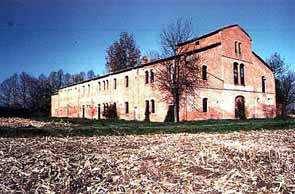
This itinerary starts at Cappiano Bridge, built in 1550 under the wishes of Grand Duke Cosimo I of the Medici Family to create a barrier for the free-flowing waters and exploit the fishing potential of the resulting lake. The building, recently restored, is now a hostel.
From Cappiano Bridge continue as far as Fucecchio and then follow the SS 436 to Montecatini. Turn left at the junction for Massarella, and climb up towards the village; stop at some of the pull-ins along the way to admire the wonderful panorama that most of the marshland has to offer.
One of the local industries still alive in Massarella is harvesting the marshland grasses; they are exported all over Italy for use in manufacturing crafts. The Parish Church holds recent frescoes by Romano Stefanelli; don’t miss the beautiful "Crucifixion" that the artist set in the Marshes.
Leave the village and after a few kilometres turn right into Via di Salanova. Leave your car at the bottom of the hill and proceed on foot to Salanova Harbour, where you will find some typical Marsh boats berthed.
Further on, cross a dirt road that flanks the area of the Gulf. Turn right near a small air-field to get to the tarred road again on the banks of the Capannone Canal. From here you can continue on foot to visit the tobacco dry-houses at Piaggione just a few hundred metres further on.
Tobacco cultivation was very widespread here at the beginning of the 20th Century. This is testified today by the three huge buildings, reminiscent of secluded cathedrals, at Pratogrande, Piaggione and the Settepassi farm that were built to cater for drying and maturing the tobacco grown in the nearby fields.
Continuing along the bank, the path skirts La Monaca area which is visible on the right. This area is part of the Fucecchio Marshes Nature Reserve (Righetti –La Monaca area); here from Autumn to Spring, with a good pair of binoculars it is possible to observe several water birds.
Alternatively, take the first turning left to the Capannone, an architectural complex that is witness to how important the waterways were until the 19th century. The port of the same name was in fact one of the main berthings in Valdinievole.
This is where the route ends. From Capannone it is easy to reach Anchione and Ponte Buggianese, about two kilometres away.



